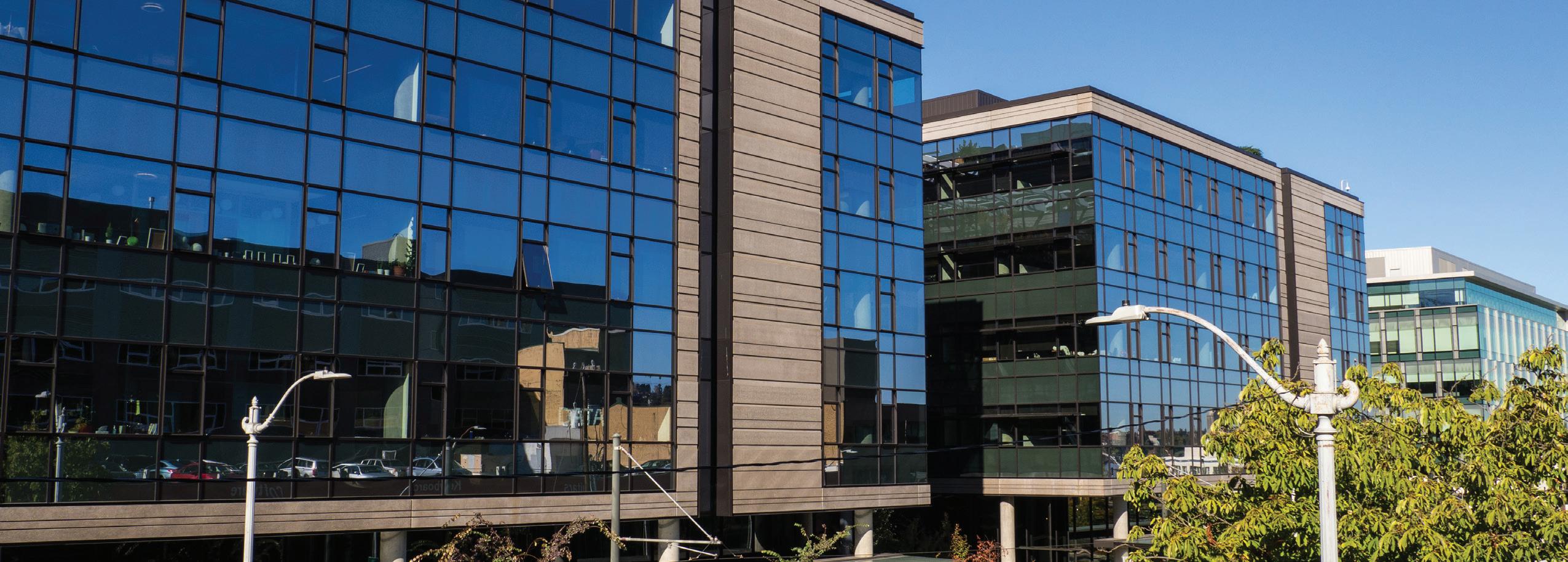Keeping a New Building Like New
In the first 3 to 4 years of operation, “building performances typically deteriorate as much as 30%.”1 Block 44, located in Seattle’s South Lake Union technology hub, is managed and operated by CBRE. Completed in 2014, Block 44 is a 395,000 ft² Class A, LEED Platinum certified office building. Even though Block 44 is a new building, setpoint and sequence modifications, manual system overrides, tenant activity, deferred maintenance, and space-use changes can lead to operational drift within the building automation system (BAS) and ultimately inefficient building performance. Wanting to ensure like-new building operation was maintained at the facility, CBRE turned to ATS for solutions.

ATS facilityCARE Informatics
ATS augmented CBRE’s existing controls support agreement by adding their data informatics service, facilityCARE. The ATS facilityCARE service identifies energy and cost saving opportunities through ongoing machine-based commissioning, advanced fault detection, reporting, energy monitoring and analytics.
6% year-over-year reduction in total building consumption
$19,500 in avoided cost
Reduced equipment runtime by 35,000 hours
Discovered more than $10,000 in electrical system repairs that were covered under warranty at no cost to the facility.
ATS integrated facilityCARE software into Block 44’s Alerton BAS and began holding monthly system operation and performance reviews with CBRE to discuss operational deficiencies and develop a path for improvement. By combining an extensive library of automated analytics and fault detection with facility operations expertise, ATS proactively identified system inefficiencies and solutions that would not have been detected during normal day-to-day maintenance activities.
Result
The ATS facilityCARE service allowed CBRE to move from a traditional facility operations approach to one of continuous facility improvement, driven by data. Through the data, ATS identified thousands of mechanical and control system operational faults that would typically lead to building performance deterioration. By cataloging and prioritizing system faults for correction, cumulative system runtime was reduced by 35,000 hours in the first year. Even with rising occupancy, and the tendency for building performance to deteriorate as much as 30% in the first few years, the total energy consumption was reduced by 6% year-over-year. In addition, the facilityCARE process identified more than $10,000 in electrical system issues that were resolved through warranty, at no cost to the building ownership
Faults Discovered and Resolved
By using facilityCARE, ATS and the CBRE facilities team uncovered hundreds of operational issues and applied corrective actions. The following are examples of several key faults and energy conservation measures identified in the facilityCARE process. Each of the items below created energy waste and shortened equipment life cycles.
All Day Operation
Setpoints Low/High
Ventilating During Unoccupied
Hours
Economizing While Heating
Zone Sensor Failures
Due to inadvertent manual overrides or improper schedules, equipment was running 24 x 7.
Occupied and Unoccupied zone setpoints outside of building standards range for efficiency and comfort.
Unnecessary ventilation and reheat of the outside air during night low limit operation.
Original mixed air temperature control sequence design created simultaneous cooling/heating conditions.
Wireless sensor failures (due to unauthorized or improper removal or relocations) driving permanent zone heating or cooling modes.
Zone Damper Overrides & Failures VAV dampers manually overridden or failed causing comfort issues, high duct static setpoints and simultaneous cooling/reheat conditions.
VAV Primary vs. Series Fan Airflow
Optimum Start Operation
Improper setpoints causing more VAV primary airflow than series fan airflow, driving high duct static setpoints and limiting cooling capacity.
Original optimum start design error, causing the building to start too early.
“In year one we reduced cumulative equipment runtime by more than 35,000 hours and reduced total building consumption by 6% year-over-year. Considering most buildings degrade by nearly 30% after the first few years, this is akin to saving 36%.”
- Pete Segall, Energy Services Manager ATS AutomationAbout ATS
ATS, established in 1986, specializes in custom engineered and installed Building Automation Systems control solutions for buildings’ mechanical and electrical systems, allowing owners to reduce energy consumption and maximize effectiveness of facilities management personnel. ATS has offices and provides services in Washington, Idaho, Montana, Colorado, Wyoming and Alaska. Contact your local ATS representative to find out how you can start running your building more efficiently and economically. Visit www.atsinc.org to find the location near you.
ATS
450 Shattuck Ave South
Renton, WA 98057
(p) 425.251.9680
(f) 425.251.0949
www.atsinc.org
© 2017 ATS
